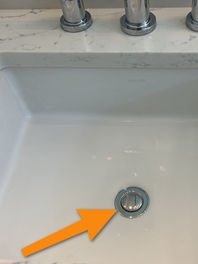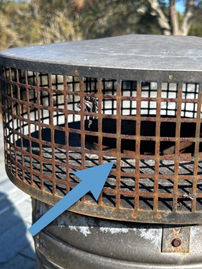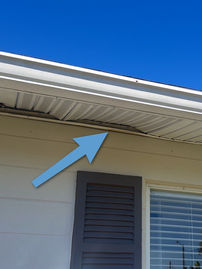What Will This Inspection Cover?
This inspection will cover single family and condo inspections to the state's standards. This includes the 5 main elements of the home: foundation, plumbing, electrical, HVAC (heating, ventilation, and air conditioning), and roofing, as well as many components within each primary category. Additionally, appliances, fireplaces, fixtures, and other elements of the home will be inspected.
Foundation

Plumbing
Electrical
HVAC
Roofing

Appliances

Systems

Fixtures

Components
Specific to Condo Inspections:
Condominiums have components limited from a typical inspection due to coverage by their Homeowner's Association (HOA).
Foundation
Structural Systems: Inspectors will evaluate the home’s foundation, framing, and overall structural integrity. This includes checking for presence of/ severity of cracks in walls or ceilings, uneven floors, water intrusion, grading and drainage of the property, erosion of soils, and any signs of settling that could indicate serious foundation issues.

Plumbing
Plumbing System: We will check the pipes, fixtures, and water supply and drainage systems. This includes testing faucets, toilets, and showers for leaks, pressure, and functionality. The inspector checks the age, condition, and operation of the water heater. We will also note water/ gas plumbing material and look for signs of corrosion or water damage around pipes or under sinks.
Electrical
Electrical System: Inspectors will examine the electrical panel, wiring, outlets, and light switches and fixtures. We'll check that the system is properly grounded, that wiring appears in good condition, and for exposed wires or signs of electrical hazards (such as outdated panels or circuit breakers, loose wiring or overloaded circuits, etc.).
HVAC
HVAC (Heating, Ventilation, and Air Conditioning): The inspector will evaluate the heat source, air conditioning units, ventilation, and ductwork to ensure they’re functioning properly. This includes checking for any signs of wear, improper installation, mold, moisture, or improper venting. They assess the age and condition of the units and ensure that the systems are functioning properly.
Roofing
Roofing: The roof is carefully examined for any signs of wear, damage, or leaks. Inspectors will look at shingles, flashing, and the general condition of the roof structure. Any missing or damaged shingles could lead to leaks or water damage inside the home or siding.
Interior Systems and Components: This includes checking doors, windows, flooring, walls, ceilings, and for any signs of damage. Inspectors may check for proper insulation, ventilation, and issues like mold, water stains, or signs of pests. Appliances: The inspector tests the operation of appliances, such as the mechanical exhaust vents, garage door operators, the stove, oven, dishwasher, and microwave, to ensure they are working properly.
Exterior Systems and Components: The exterior of the home is checked for overall condition, including siding, grading and drainage, porches, decks, walkways, and driveways. Inspectors look for any signs of damage, rot, or deterioration that could lead to expensive repairs.
Attic and Crawl Spaces: These areas are important for detecting issues like exposed wiring, poor insulation, improper venting, roof or plumbing leaks, or signs of pest infestations. Inspectors will also check for proper ventilation in these spaces to prevent moisture buildup and mold growth.
Safety Features: Inspectors will also look at safety elements such as smoke detectors, carbon monoxide detectors, dryer exhaust vent, railings, stairways, and overall building standards of practices.
After the inspection, the inspector provides a report with their findings, including photos of any issues they found, along with recommendations for repairs or further evaluation by professionals.

_edited.png)



















































































































